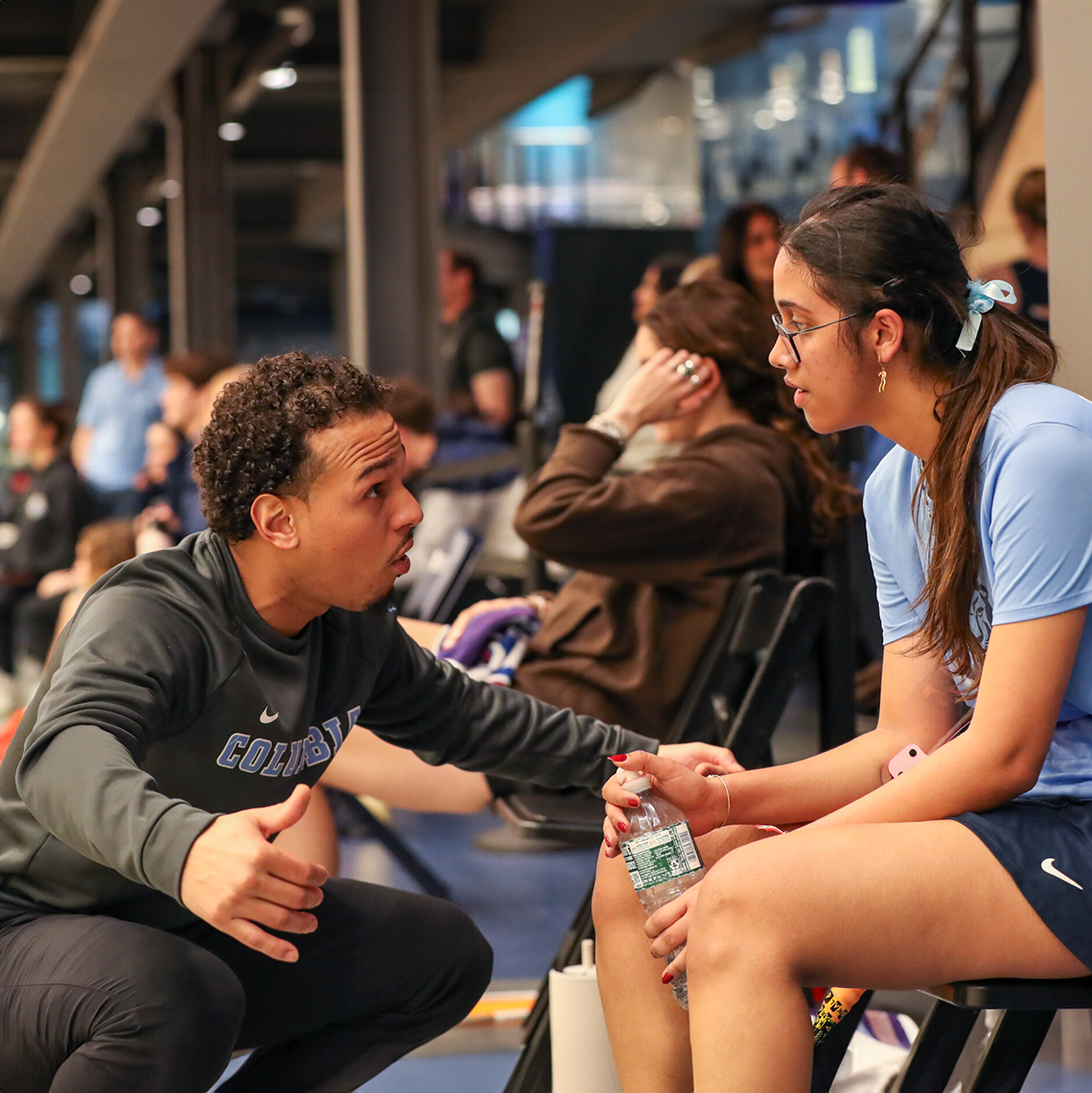Playing in College
Playing squash in college can be a wonderfully enriching and meaningful experience. Whether a student competes for a highly-ranked team or joins a team despite limited experience, the camaraderie, team travel, and competition can significantly enhance their time at college.
Recruiting Resources

Playing in College
The Season
College squash is a winter sport. Team matches start in early-to-mid-November and culminate in the end-of-season National Team Championships in late February. At many schools, the main part of the season falls during the winter intersession between the fall and spring semesters, with the championships in the first part of the spring semester, making squash a great sport for student-athletes.
Teams
Team rosters typically range in size from 10 to 20 players. In intercollegiate matches, schools play their top ten players against their opponent's top ten. Only the top nine results count, with the number ten match being played as an exhibition.
Most college teams will play anywhere from 10 to 20 matches a year, mostly on weekends.
Practices
Teams usually begin formal practices by mid-October to early November. Most teams, however, start "captain's practice" as soon as they return to campus in the fall.
Practices are typically for two hours each day, five or six days a week.

Preparing to Apply
Squash is played at some of the top colleges and universities in the United States, and students should be prepared for rigorous academics wherever they play. The best way for any aspiring college squash player to prepare for college is to work hard in high school.
Nothing will increase a player's chances of getting into a top college more than earning the best grades possible in the most challenging courses possible, along with having reasonably good SAT or ACT scores. College is an academic challenge, and schools look for applicants who have demonstrated a commitment to challenging themselves academically in high school.
Important Note
Being a "recruited" squash player may help a student's chances of being admitted, but it will not make up for a mediocre or poor academic record. Unfortunately, many high school seniors realize too late that they didn't work hard enough early in high school and, therefore, don't have the option of attending certain top colleges.

Deciding Where to Apply
This site has a list of schools that have squash programs along with coaches' contact information and links to schools' and teams' websites. The site also has team rankings and results along with articles about many teams. Students can use this information to help them decide which schools might be the best fits academically and athletically.
Even if a school doesn't have a varsity squash program, it can still be possible to play squash in college. A number of schools have well-established club teams that compete nationally. If a school doesn't have a squash club, starting one can be a great experience. The CSA has resources to help schools and students start squash programs.
Visiting Schools
Visiting a school can be one of the best ways to determine whether it is a good fit or not. After September 2 of their junior year in high school, students can arrange to meet with a school's coach and ask questions about the squash program, and they can meet with a member of the admissions staff and get a feel for the campus.
Another option for students interested in squash is to play a tournament or participate in a camp at a school they are interested in. These options can help students get a better sense of a school's squash program and can often help them get to know the coaching staff.
If a student can't visit a school, they should still try to do as much research about it as they can. Schools' websites are great places to start, and contacting a coach can be a good way to learn more about a program. Admissions offices are also useful sources of information, and they can often set up phone interviews or meetings with local alumni even if students can't travel to campus.

Recruiting
Interested junior squash players should familiarize themselves with the CSA recruiting regulations and timelines, all of which can be found here.
Colleges try to have a well-rounded undergraduate student body with students representing a wide variety of backgrounds and interests. Strong academic performance is a key criteria for admission. However, colleges give credit to students who have demonstrated success in extracurricular activities on a national or international level.
A coach is expected to inform the Admissions Office of any applicants that have a national or international level of success in their sport, so the Admissions Office can include that information in their overall evaluation of the candidate. Almost all colleges take into account the extracurricular contributions, including athletics, that applicants are likely to make to campus life.
Colleges vary in the number of squash players – both recruited and non-recruited – they will admit each year. Anywhere from one to four players is typical.
CSA Recruiting Regulations
Key Regulations
CSA recruiting rules prohibit coaches from calling students on the phone until September 2 of their 11th grade year in high school. They can send students letters and e-mails starting on the same date, although questionnaires can be mailed to students any time in high school.
Students can visit a school any time, but a coach can only provide a student with an expenses-paid "Official Visit" one time for a maximum of 48 hours after January 1 of their 11th grade year. Each high school student-athlete may accept no more than 5 official visits.

The Application Process
Most high schools will have useful resources to help students with applying to college. In general, students should continue to work hard on their academics throughout their senior year; attempt to get the best standardized test scores they can, even if that means retaking tests; and do a quality job on the application itself.
No matter how good a squash player a student is, a hastily or poorly done application can hurt their chances of being admitted.
Students interested in playing squash in college should also try to stay in touch with coaches throughout the application process. They can send coaches their tournament results, visit schools, and watch college matches. Students should also consistently work on improving their squash game.
Early Admissions
Many schools offer early admissions, and for students who have a strong academic profile and are sure of which school they want to attend, applying to a single school to find out if they are admitted by mid-December can be a good choice.
If a student decides to apply early, they should be prepared to apply to other schools in case they are not admitted to their first-choice school. Throughout the player's time in high school, they should continue to work hard in school, play in tournaments, and behave appropriately, both in person and online.

Final Thoughts
There are excellent squash programs with wonderful coaches at a variety of schools in the United States, and students should be able to find a college that will be a good fit for them academically, athletically, and socially.
Even though applying to college can be a stressful process, the result of joining a vibrant college community and inclusive, familial squash team is well worth the effort.
Get Started Today

